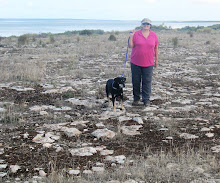
MEDIA RELEASE
29 August 2008
Warakurna Artists Win Illustrious Australian Indigenous Award
The significance and value of Aboriginal owned and governed Art Centres in the Australian art industry has been officially recognised and endorsed with Western Desert Mob’s Warakurna Artists winning Reconciliation Australia and BHP Billiton’s Indigenous Governance Awards announced today in Melbourne.
Warakurna Artists of the Warakurna community in the Ngaanyatjarra Lands in Western Australia’s western desert, topped the 2008 Awards for the Art Centre’s strong governance and commitment to consumer education and ethical dealing in the Indigenous art industry.
Warakurna Artists Art Centre Manager, Ms Edwina Circuitt said the award is a credit to the extensive governance training and consumer education programs by the West Australian Government operating in the Ngaanyatjarra Lands to empower Aboriginal artists.
“Warakurna Artists is incredibly proud to be recognised with such a prestigious award. It highlights the significance of being an Aboriginal owned and governed Art Centre business,” she said. “Our Art Centre was established in 2004 to support the production and marketing of culturally intense, artistically rich works of art through a creative facility where the artists and community are the sole benefactors of art sales revenue,” Ms Circuitt said. “Receiving this award is a testament to not only the passionate people of Warakurna community, but the collaborative commitment artists and Art Centres in the Ngaanyatjarra Lands who work together through alliances such as Western Desert Mob to promote positive change in the
Aboriginal art industry.” Ms Circuitt said.
Warakurna artist, community elder and Chairwoman of Warakurna Artists, Mrs Eunice Porter said painting was important to sustain culture within Warakurna community and the Art Centre provides a central facility for social and cultural events as well as a place to paint. “Warakurna is a happy place. We paint our stories to share them with our children. We paint to share our stories with whitefellas. We go on trips to country to paint our stories so our culture will remain strong,” Mrs Porter said.
Western Desert Mob coordinator, Mr Tim Acker said the award is evidence of Warakurna Artists’ passion and dedication to ethical trading in the Aboriginal art industry.
“Warakurna Artist’s Reconciliation Award is timely recognition of Aboriginal owned Art Centres’ importance to encouraging best practice in Australia’s most significant creative industry.
Warakurna Artists is a committed member of Western Desert Mob and fine example how
Indigenous and non-Indigenous Australians can work in collaboration,” Mr Acker said.
“Aboriginal owned and governed Art Centres enable individuals to access independent income, improve community wellbeing and empower artists. In addition they maintain transparent operations from artistry through to sale providing art buyers works with the most impeccable provenance on the market,” Mr Acker said.
Media Release: Warakurna Artists Win Illustrious Australia Indigenous Award cont.
Warakurna Artists’ prize includes a $50,000 scholarship for two art centre Executives
to attend an international leadership program in the USA. The prize also includes
$10,000 toward governance training and professional development for Warakurna
Artists.
Western Desert Mob is an alliance of six Aboriginal owned and governed art centres from the Ngaanyatjarra Lands in Australia’s western deserts.
Western Desert Mob artists are from:
- Warakurna Artists, Warakurna
- Papulankutja Artists, Papulankutja
- Kayili Artists, Patjarr
- Tjanpi Desert Weavers, NPY Lands
- Maruku Arts, Mutitjulu
- Tjarlirli Art, Tjukurla
For more information please contact:
Emily Sharland
Emily@thehub.net.au
0420 988 414
www.westerndesertmob.com.au
The Indigenous Governance Awards
The IGA is a partnership project is a partnership project between Reconciliation Australia and BHP Billiton designed to identify, analyse, celebrate and promote high achieving Indigenous governance. By boosting awareness about the benefits of good governance, the awards encourage organisations to invest time and energy into this important element of their work for Indigenous communities.




